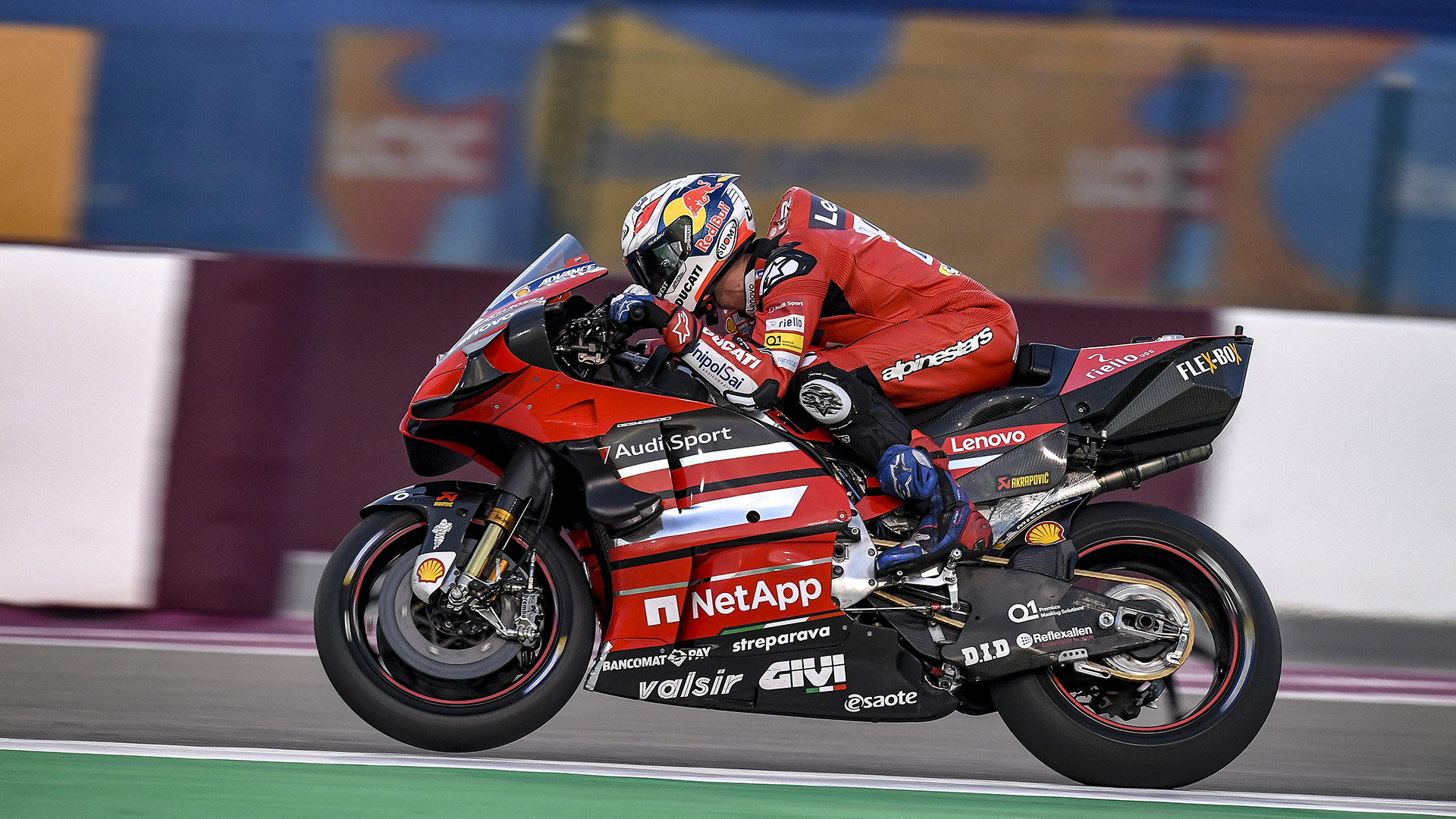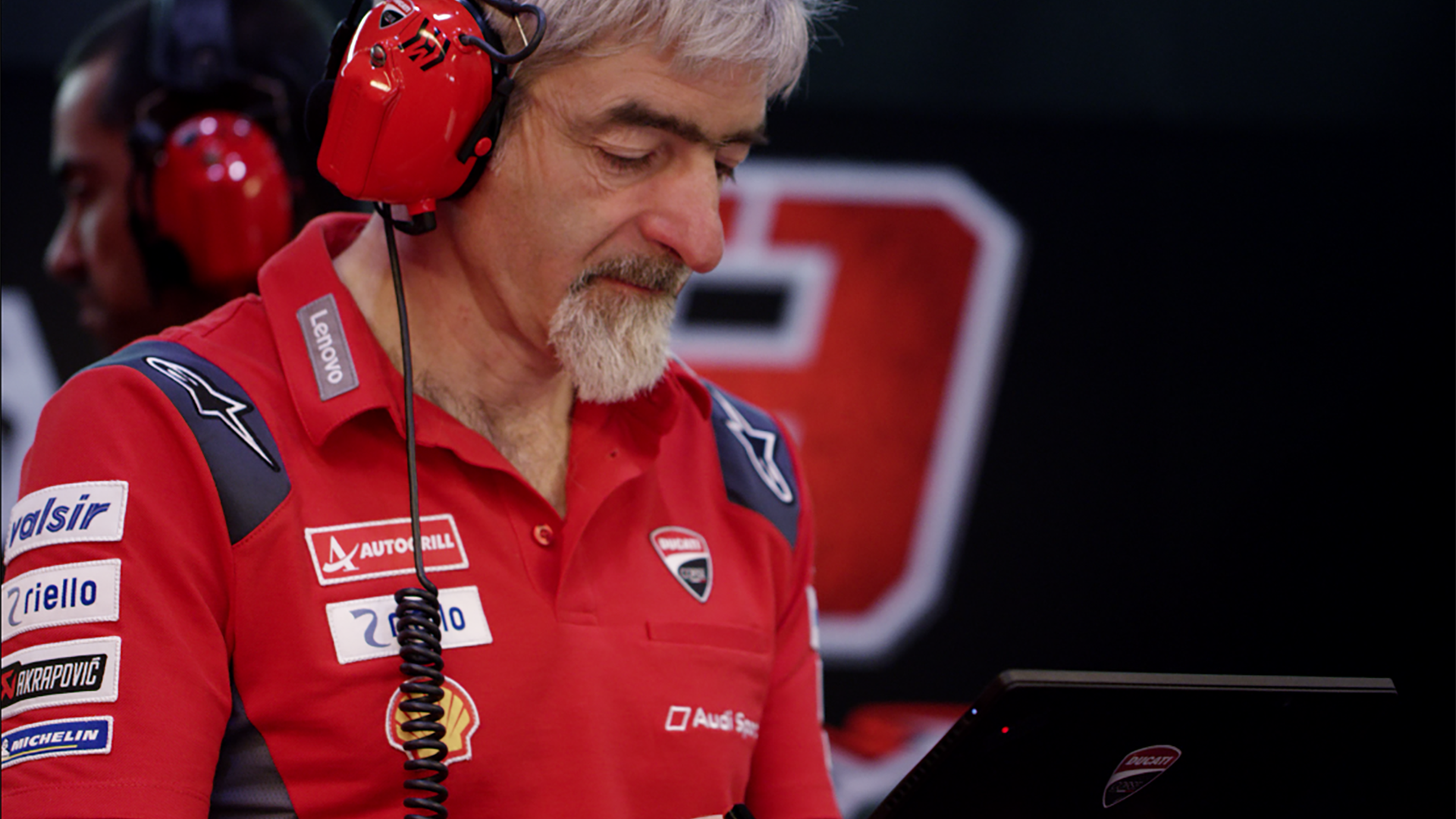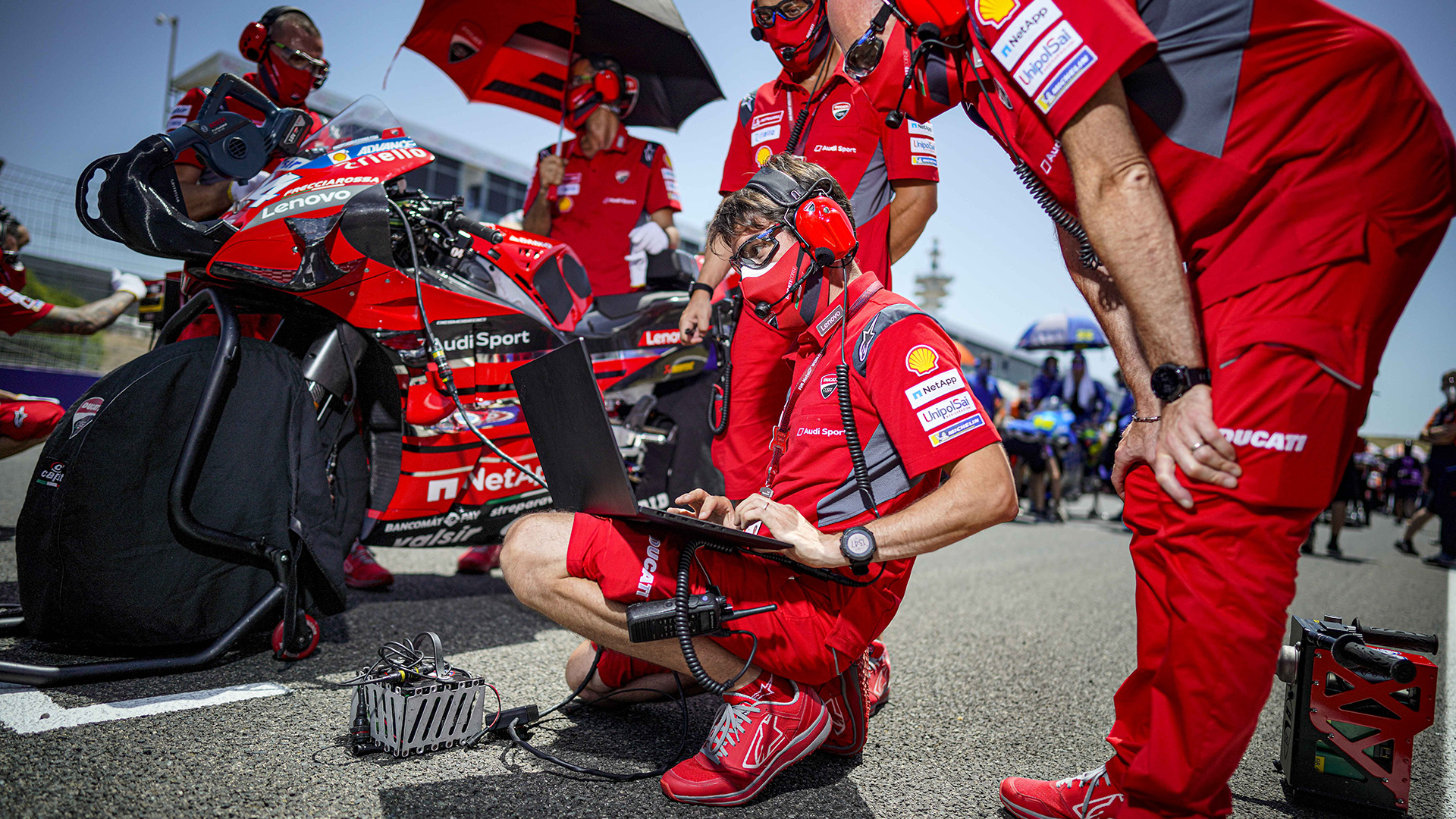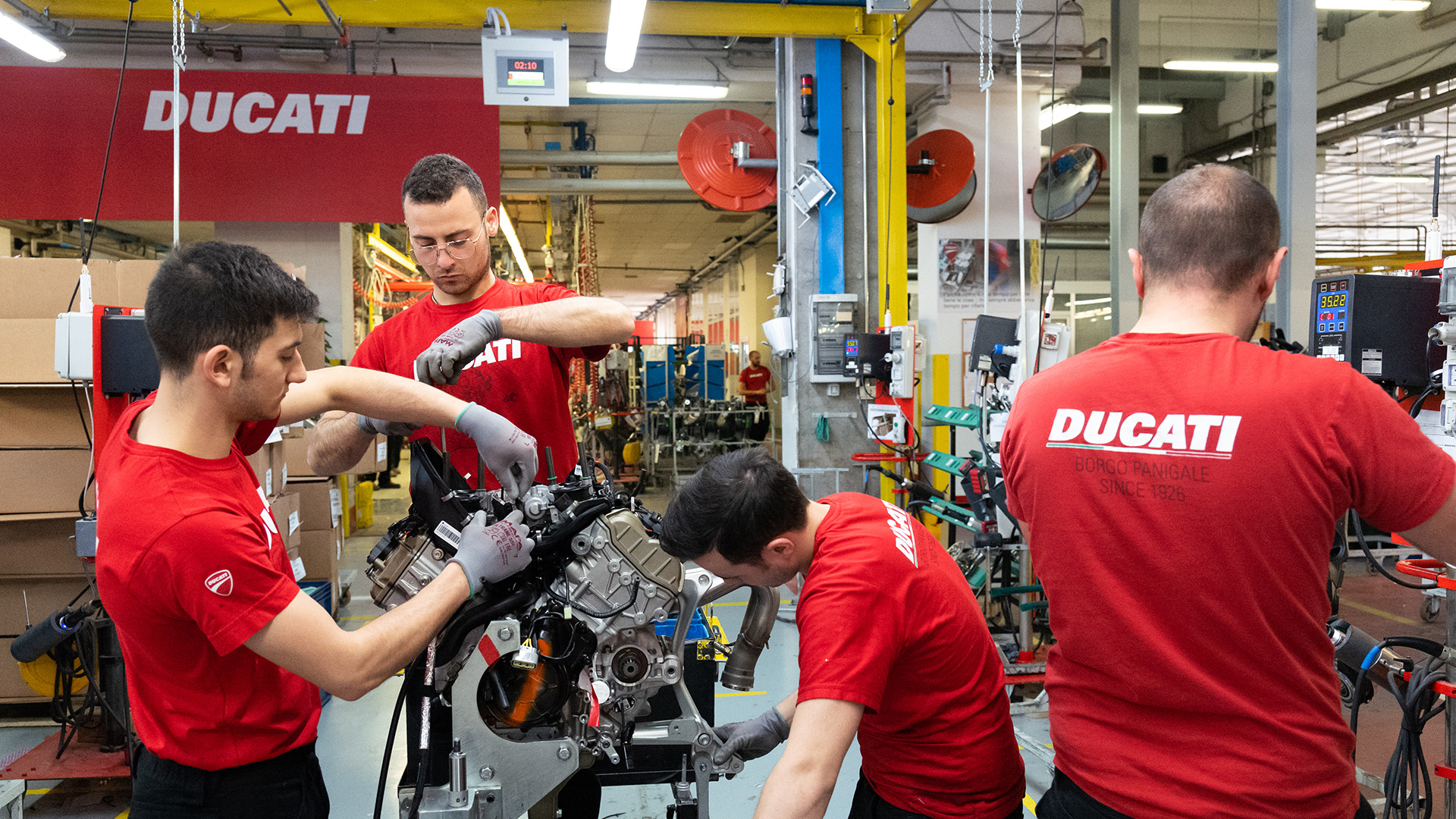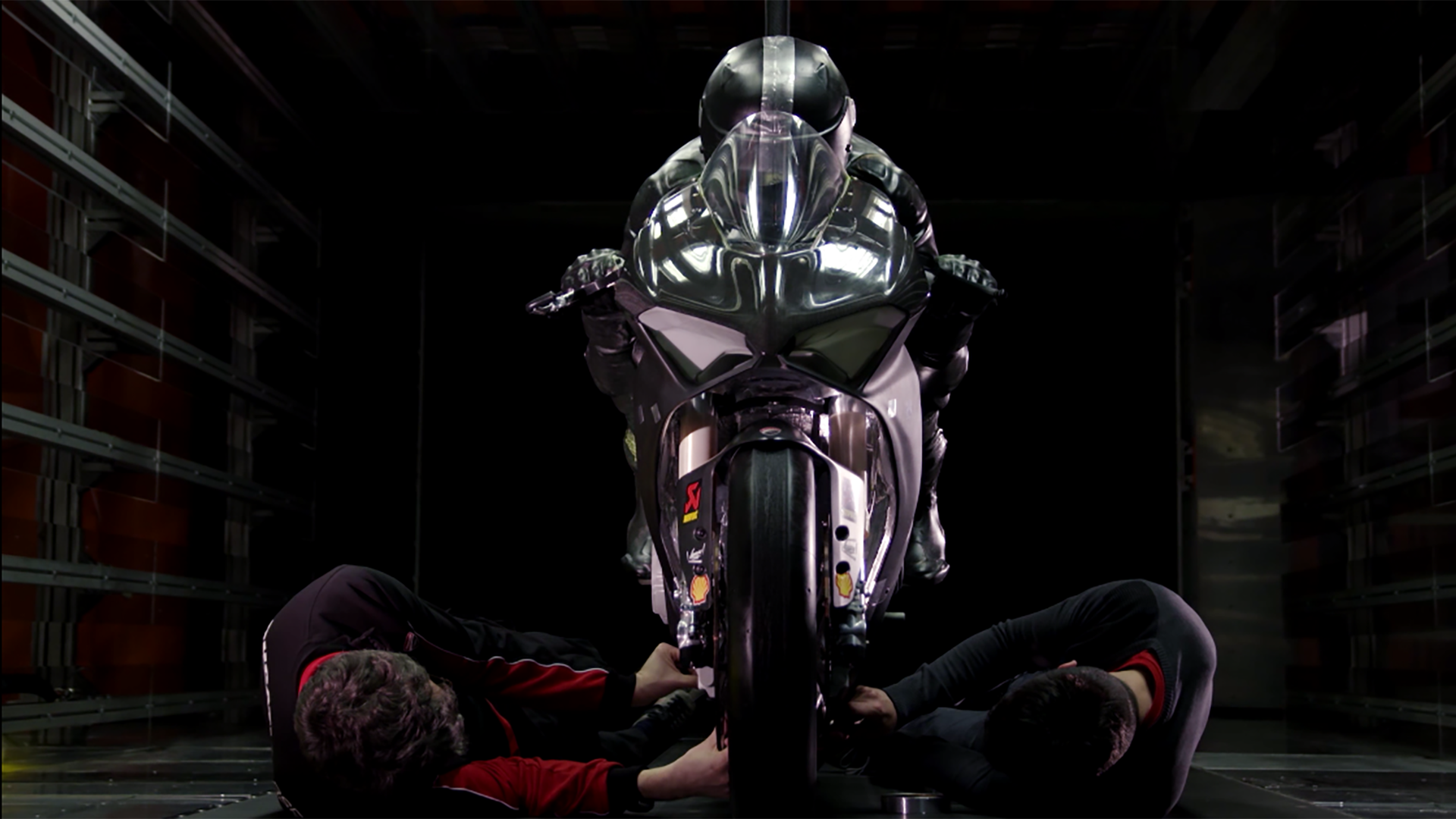Ducati Corse uses transformational tech to win
Motorcycle racing is a sport of split seconds. A few ticks of the clock can result in triumphant success for a team, or resounding defeat.
When you’re racing at speeds of up to 220 mph, those split seconds add up, and it’s up to the highly trained instincts of the rider to decide just how to use them. The number of decisions that must be made every instant are innumerous, the margin for error minuscule. Even a minor mistake can cost a rider a race, or his safety.
Besides years of training and practice, MotoGP racers have a new asset on their side: big data. Nothing can replace a rider’s instincts, but data can make them unbeatable.
Ducati Corse, the racing arm of the famed Italian motorcycle brand, is one of the leaders of the pack when it comes to harnessing the latest technology to win races and keep riders safe. Every Ducati MotoGP bike comes equipped with upwards of 60 sensors that track everything from tire rotation and speed to grip and acceleration. The rider isn’t alone on the track with data on his team.
FEATURED SOLUTIONS

Lenovo Data Center Solutions

Lenovo IoT Solutions

Lenovo Workplace Solutions
“Technology is what makes Ducati a winning team,” says Ducati Corse’s General Manager, Luigi “Gigi” Dall’Igna. And with Lenovo, Ducati’s key technology partner, Ducati has some of the most innovative tech on its side.
Lenovo outfitted the team with cutting-edge servers and computers equipped with machine-learning and AI capabilities, so they can track, store and analyze the immensity of data generated on the race track and make changes as necessary. Tires need air? Chassis needs a tweak? Lenovo workstations pick up on it so that riders can focus on what matters most, which according to Dall’Igna, is “winning the championship.” And because of the mobility and durability of Lenovo ThinkPads, Ducati can have their computers with them anytime, anywhere — including trackside.

It’s a brave new world for motorcycle racing, which only in the last decade made the shift to Big Data.
— Gabriele Conti, IT Director, Ducati Corse
While technology is making riders faster, it’s also keeping them safer. “In the 1990s, half the riders would be in the hospital with injuries during the course of a year,” said Gabriele Conti, the IT Director for Ducati Corse. “Now, the crashes aren’t nearly so dangerous.” Why? “Largely because of the help we get from technology and electronics.”
“Back then,” Conti continues, “we didn’t have any electronics helping us with this, so if you missed a turn or an engine light, you’d crash. Now, electronics control every piece of the bike. They can tell you if you’re going too fast and not in control, for example, or help you to reduce power to avoid a fall.”

Technology is what makes Ducati a winning team.
— Luigi “Gigi” Dall’Igna, General Manager, Ducati Corse
These advancements in safety don’t just benefit the racing teams, but the hobbyist, too. The racetrack is a de facto test track for consumer bikes, a place where new technology can be tried and perfected before it hits stores.
“Most of what we do in racing,” says Ducati Corse Sporting Director Paolo Ciabatti, “translates to something our customer can enjoy in the future.”
That includes racing-inspired bikes like the Panigale V4, Ducati’s first large production street bike with a V4 engine — a value-add inspired by the Desmosedici racing bike. Unlike the Desmosedici, however, the Panigale V4 was designed for durability and ease of riding — aspects perfected on Lenovo workstations, which use AI-developed riding simulations as virtual testing grounds for new technology.
“It’s a brave new world for motorcycle racing, which only in the last decade made the shift to Big Data. Where it goes from here is anyone’s guess. But what we can safely predict is growth”, says Conti.
“Year by year, the role of Lenovo is increasing,” he said. “We are already using the workstations and servers for data management, but that is just the first step. Now, we are working on artificial intelligence and Big Data. Step by step we are growing with Lenovo.”






